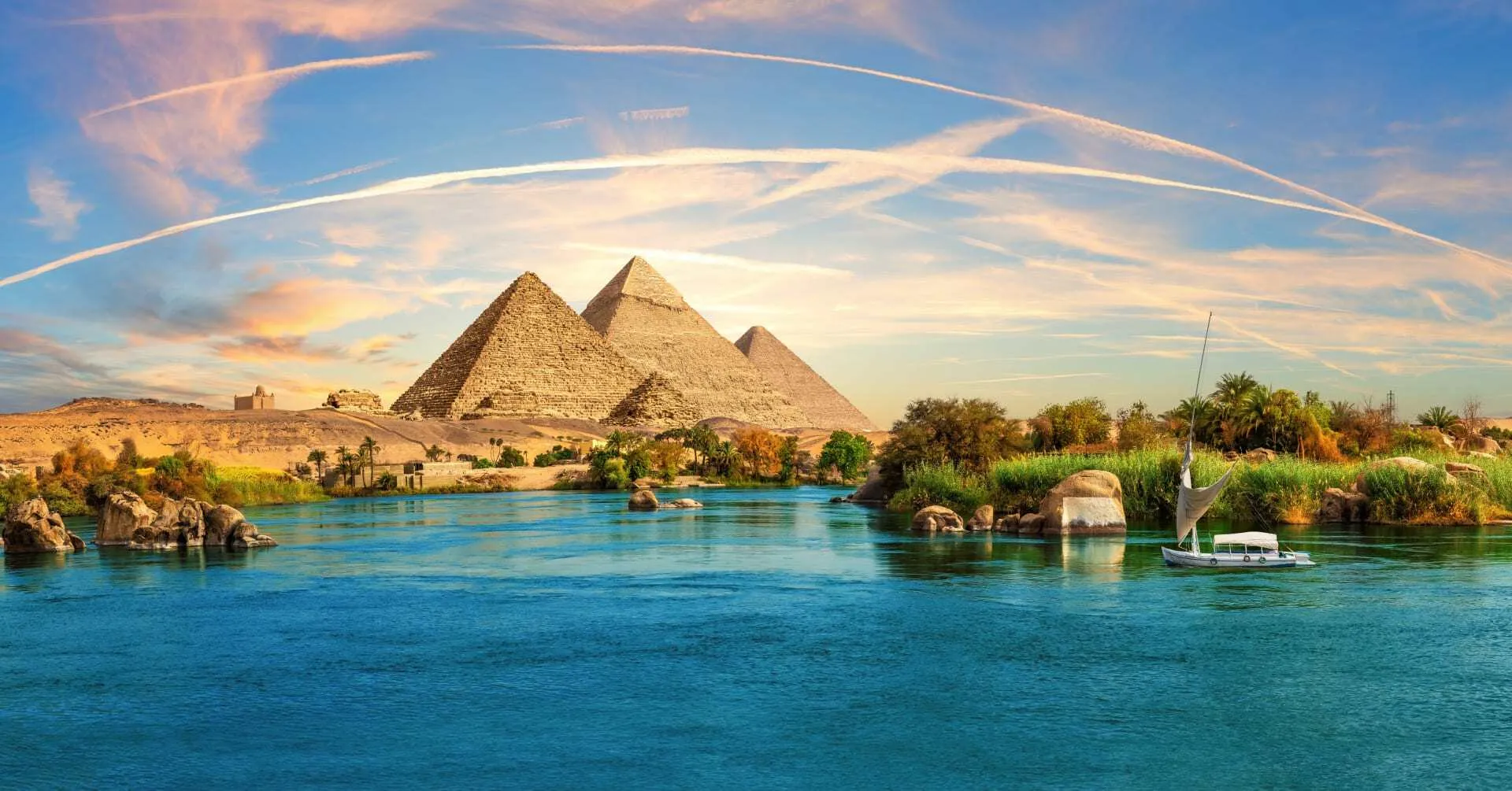Abu Simbel temple is a wonderful Pharaonic treasure
Abu Simbel Temple is a wonderful Pharaonic treasure
Abu Simbel Temple is considered a national treasure and one of the most important sites in Egypt and the world. When you visit the temple, you will be amazed by the cleverness of its design that displays the culture of the ancient Egyptians. The inscriptions on the walls depict the life and religious rituals of the ancient Egyptians. Abu Simbel Temple is one of the greatest temples of ancient Egypt and you can visit it through Egypt tour packages, and it consists of two temples: the main Abu Simbel Temple and a smaller temple.
Abu Simbel Temple Location
Abu Simbel Temple is located in the middle of the mountain on the west bank of the Nile River in southern Aswan. It is located on the west bank of Lake Nasser cruises , behind the High Dam. The temple was carved into the rock and divided into two sections. It was built during the reign of the Nineteenth Dynasty, and King Ramses II ordered its construction in 1250 BC. Abu Simbel Temple is a wonderful achievement in engineering and design.
The statues in Abu Simbel Temple are very large and impressive, in the front of the temple there are six statues, the first four of which depict King Ramses II, and the remaining two statues of Queen Nefertari, the king's wife.
The main temple of Abu Simbel.
The temple of Abu Simbel is an amazing structure, with a height of 33 meters and a width of 38 meters. At the front of the temple are four giant statues, so you should explore this ancient temple through the 8 days Egypt vacation packages, each of which is about 20 meters high. Surprisingly, these statues face the sun, and their features are beautiful and smiling. Above the statues, you will find the names and titles of Ramses II, in addition to a group of amazing inscriptions, writings and drawings. At the bottom of the temple, there are statues of the king's family to see and explore this ancient temple, so go through the Egypt classic tours.
Inside the temple, you will see a ceiling decorated with drawings of falcons. The sun rises on the head of Ramses II twice a year: on his birthday and the day of his coronation. This wonderful engineering and design achievement is considered one of the great masterpieces of ancient Egyptian architecture, and tourists come from all over the world to see it, and this can be done from Aswan day tours. The temple is one of the largest sacred places used by the ancient Egyptians.
The small temple of Abu Simbel.
The Small Temple of Abu Simbel is located 150 meters north of the main temple. It houses six statues, four of which are of King Ramses II and two of his wife Queen Nefertari. The temple consists of an entrance leading to a hall with beautiful columns decorated with carvings and inscriptions. On the sides of the temple, you can see drawings of the king and queen by visiting this small temple, which can also be reached easily, such as luxury Nile cruises, while the walls depict scenes from the king’s daily life, including food and drink offerings.
Upon entering the temple, you will see drawings of the king and queen with the goddess, and inside the temple, there is a statue of the goddess Hathor. The columns are particularly impressive, and the drawings and inscriptions provide wonderful insights into the lives and beliefs of the ancient Egyptians. Although the Small Temple of Abu Simbel is smaller than the main temple, it is an essential part of any visit to this wonderful site and is also one of the things to do in Egypt.
Saving the Temple of Abu Simbel from drowning.
The Temple of Abu Simbel was moved in 1959 due to the construction of the High Dam. The rising Nile behind the High Dam would have caused the Abu Simbel Temple to be submerged, so in 1965, the temple was moved to another location. Workers cut the temple into large blocks that were lifted and placed in the new location. About 150,000 tons of rock were lifted over the temple to create a mountain. The relocation of the temple was completed in 1968. UNESCO has taken responsibility for preserving the temple because it is considered a cultural treasure, not only for Egypt but for the entire world. The Abu Simbel Temple is a national and global asset and one of Egypt luxury tours, and international organizations have cooperated to protect and preserve it.
The sun sets on the statue of Ramses II.
One of the most beautiful phenomena witnessed by the world is the sunset on the statue of Ramses II on two specific days every year. The first was on February 22, which is the king's birthday, and the second was on October 21, which is the day of the king's coronation in Egypt. But after the construction of the High Dam and the transfer of the temple to a new location, the phenomenon changed. The sun now sets on the head of the statue on October 22 and February 22 due to the shift in longitude and latitude due to the transfer of the temple.
Discovery of the Temple of Abu Simbel.
But the temple was not properly excavated until 1817, when Giovanni Belzoni, an Italian explorer and engineer, cleared the entrance to the temple and entered it. Belzoni found the temple in good condition and the statues intact. He made drawings and wrote about his discovery in his memoirs. Belzoni also found inscriptions on the walls of the temple that helped in understanding the culture and religion of ancient Egypt, and since then the Abu Simbel Temple has become an important site for archaeologists, historians and tourists from all over the world and can be easily visited and spend a long time enjoying the city of Aswan and its temples through 12 days Egypt tours.
Facts about the Abu Simbel Temple.
The Abu Simbel Temple shows the ingenuity of the ancient Egyptians in architecture and astronomy, and evidence of the ingenuity of the ancient Egyptians is clear from the sun descending on the statue of Ramses II. There is a small temple next to the main temple, and Ramses II built it for his wife Nefertari to express his love for her. The Abu Simbel Temple was built around 2400 BC, and the huge statues were carved to terrorize the enemies of the king. The Abu Simbel Temple immortalized the Battle of Kadesh in which King Ramses II defeated the enemies, and the temple contains a concrete dome, the height of this dome is 23 meters, and the top of the dome was completed to protect the statues of the temple.
The Abu Simbel temples are two massive rock temples located in the southern part of Egypt, near the border with Sudan. They were built during the reign of Pharaoh Ramses II in the 13th century BC and are considered one of the most impressive archaeological sites in Egypt that can be visited at any time and during Egypt Easter holidays. The temples are dedicated to the gods Amun, Ra-Horakhty and Ptah, and to the pharaoh Ramses II himself.
The larger temple is dedicated to Ramses II and features four giant statues of the pharaoh, each more than 20 meters high. The temple also contains a number of rooms and halls decorated with intricate carvings and colorful hieroglyphs.
The smaller temple is dedicated to Ramses' favorite wife, Queen Nefertari, and features six statues at the entrance, four of the queen and two of Ramses. The interior of the temple contains a sanctuary and several halls with stunning wall carvings.
In addition to their architectural and historical significance, the Abu Simbel temples are famous for their unique alignment with the sun. Twice a year, on February 22 and October 22, the sun shines through the temple entrance, illuminating the statue of Ramses II in the inner chamber.
The Abu Simbel Temples are a popular destination for visitors to Egypt and can be reached by plane or organized tour from Aswan or by Nile cruise from Aswan to Luxor. They are listed as a UNESCO World Heritage Site and are considered one of the most important archaeological sites in Egypt.
In Egypt, our expert Egyptologists will guide you to uncover every discovery you seek. With tours meticulously planned down to the minute, similar to our Egypt vacation tour packages, your experience in the land of Egypt will be unforgettable
 English
English  Spanish
Spanish  Chinese
Chinese  French
French  Portuguese
Portuguese  Italian
Italian  Russian
Russian  Czech
Czech  German
German  Japanese
Japanese 









